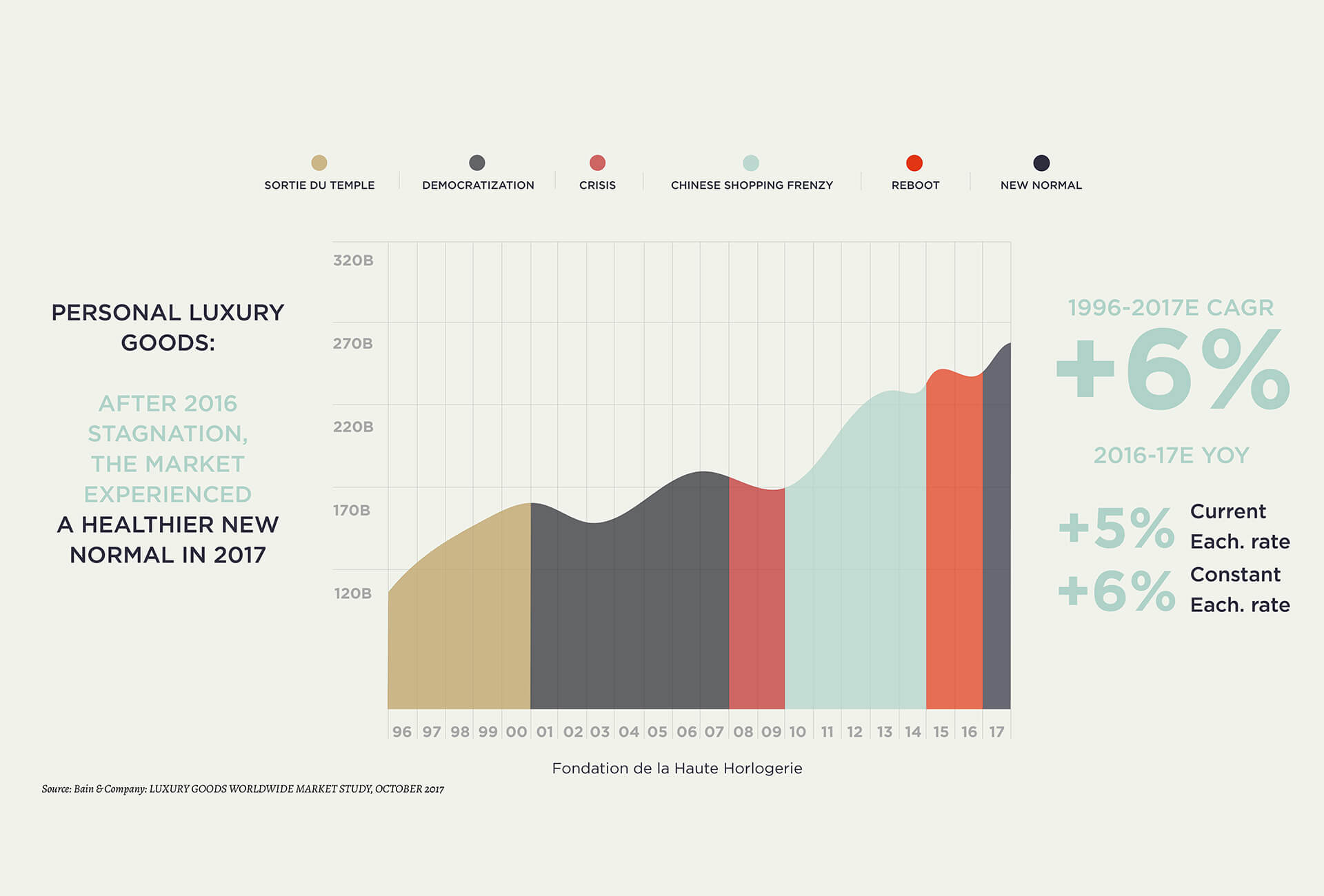If it’s true that all eyes are on China, no-one casts a more loving gaze than luxury brands. This is hardly news, particularly since anti-graft laws have faded into the background, but it becomes a far more tangible assertion in the light of the latest Bain & Co report, Luxury Goods Worldwide Market Study, November 2018, produced in collaboration with Fondazione Altagamma. The report focuses principally on personal luxury goods including watches and jewellery – the second top-performing segment in value terms (after cars) in a luxury market that’s estimated at €1.2 trillion globally, and expected to grow by 5% at constant exchange rates this year.
Aside from the soft patch brought on by the subprime crisis in 2008 and 2009, personal luxury goods have made extraordinary progress over the past two decades, rising by an average of 6% annually between 1996 and 2017. A similar increase is expected for the current year, bringing total luxury sales to €260 billion – with more of the same to come: Bain & Co expects annual average growth to be in the range of 3-5%. By 2025, the luxury market should weigh between €320 and €365 billion.
One in two luxury consumers will be Chinese
The report sheds interesting light on various aspects of this personal luxury goods market, in particular from the perspective of China. Currently, Mainland China accounts for “just” 9% (€23 billion) of the global luxury spend but is expected to grow by 18% this year. The only other countries that can hold a candle to this trend are the “rest of Asia” (+7%) and possibly Japan (+3%); Europe (+1%) and the Americas (-1%) lag behind. If we include Chinese spending on personal luxury goods abroad, China’s slice of the luxury cake climbs to €85 billion or 33%.
The outlook for the years ahead is no less impressive. According to the consultancy firm, Chinese consumers will make up close to half of the luxury market by 2025 – specifically 46% with half of these purchases being made in China as opposed to the current 24%. This explosion in Chinese domestic consumption opens up exciting prospects for luxury brands.
E-commerce corners a quarter of the market
After China, the report’s second focus is, of course, online purchasing which is transforming how the world goes shopping. Again, Bain & Co brings some interesting and quantified insights. By 2025, e-commerce will go from the current 10% (€27 billion) of market value to 25%. Multibrand retailers and department stores will be hardest hit. Also in 2025, 100% of luxury purchases will be influenced in one way or another by digital content. Furthermore, half of these purchases will be paid for using electronic means.
Here too, Chinese consumers will be the principal growth engine. Or rather, young Chinese consumers given that 55% of personal luxury goods shoppers in 2025 will be Millennials (Gen Y) or Generation Z, and that they will account for all market growth. The last trend confirmed in the Bain & Co report concerns the pre-owned market, still blazing a trail with 9% average annual growth over the past three years, reaching €22 billion in 2018. Watches and jewellery take the lion’s share (80%) of this pre-owned market, which has performed especially strongly in Europe among younger buyers, and also brings excellent prospects for future growth through specialist online platforms.













